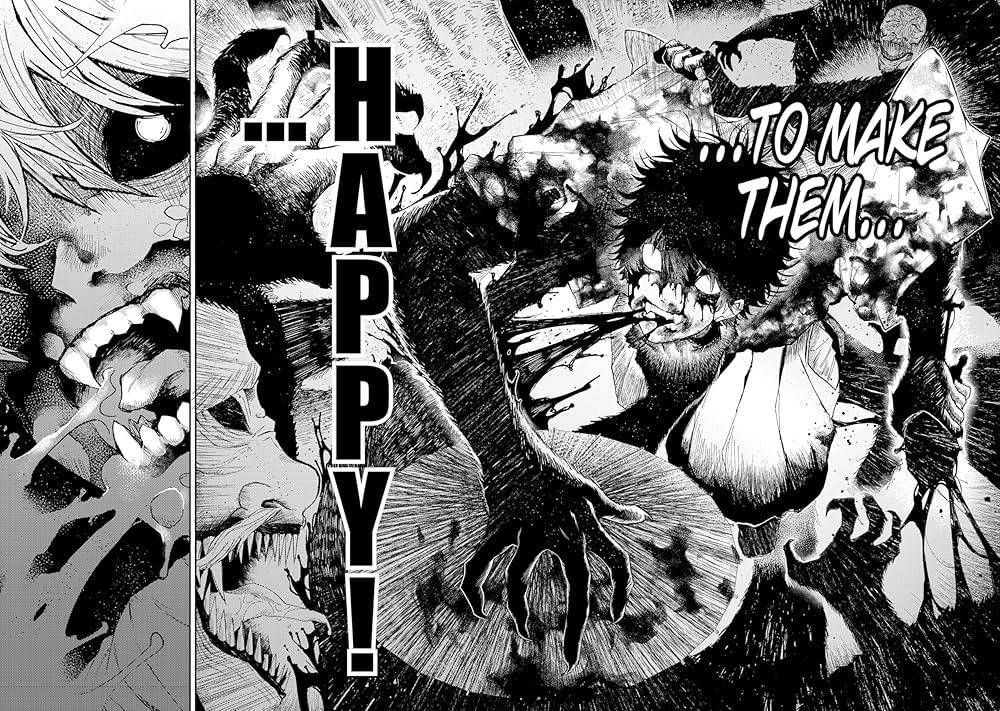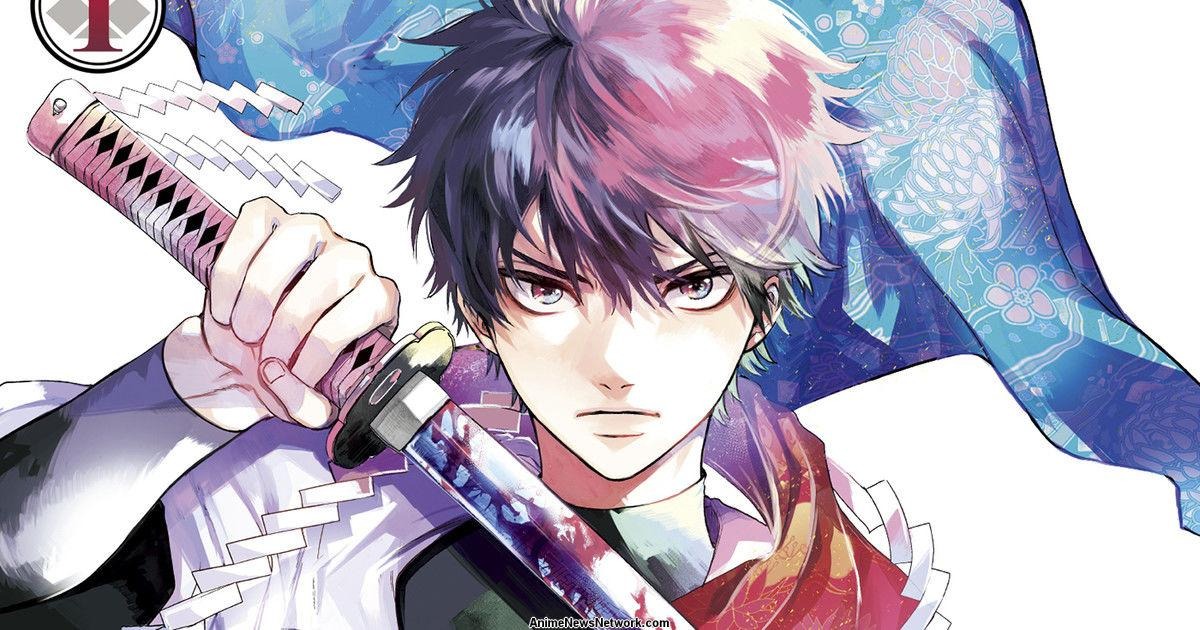If you’ve read dozens of action manhwa but still feel like you’re missing a character who’s “useless” enough to explode in a satisfying way, then Overgeared is the choice you can’t miss. I came across this series quite by accident on ComicK one of the few sites that updates translations consistently and quickly.
The more you read, the more you’re drawn into Grid’s journey from a weakling to a legendary blacksmith a character that can make you both angry and sympathetic, and finally want to cheer him on with all your heart. For those who have experienced the feeling of being underestimated in games or in real life, Overgeared really touches that psychology.
A Tragic Hero Born From Duty: Who Is Mamoru Yamaemori?
At the core of Three Exorcism Siblings lies Mamoru Yamaemori a 21-year-old shrine guardian bound to a life he never chose. Trained brutally from a young age, robbed of his education and freedom, Mamoru exists to protect the Yamae Shrine from Tengu shape-shifting mountain demons of Japanese legend.
After losing his parents at 12, he single-handedly raised his two younger brothers. The villagers think the family is cursed. The authorities know better but remain quiet. Despite living like a ghost among men, Mamoru’s sacrifice ensures his brothers enjoy normal lives. Until everything breaks.
The turning point? A savage attack where Mamoru is nearly devoured by a Tengu and starts turning into one himself.

It’s here that the story sinks its claws in. The central theme of “what if you become the monster you fight?” feels personal and raw through Mamoru’s eyes. His transformation isn’t just physical it’s emotional. His fear of hurting the very family he’s devoted his life to protecting gives the story its tragic weight.
The Brothers’ Burden: A Shonen Setup That Almost Works
After the attack, the spotlight shifts to Kei (17), a high-achieving genius and chef, and Yu (15), a rising football star. Suddenly, their mundane lives are replaced with blood, spirits, and swordplay. They begin their training as exorcists under the guidance of a veteran Guardian, hoping to stop their brother’s transformation or maybe reverse it.
From a shonen structure, this works: three siblings, unique skills, a personal vendetta. The setup practically writes itself. But while Mamoru’s arc is deeply compelling, Kei and Yu sometimes feel like shonen templates rather than real characters. Kei is the “brains,” Yu is the “brawn,” and while they do have moments of brotherly chemistry, it’s nothing that pushes genre boundaries.
That said, the emotional core the siblings’ desperate fight to save each other still hits home. If you’ve ever had to watch someone change in front of your eyes and felt powerless, this story will sting a bit.
Tengu Terror and Transformation: Folklore Done Right?
The manga draws deeply from Japanese myth. The Tengu here are not just faceless monsters they are cursed beings that gain power by consuming humans. The more they eat, the more intelligent and human-like they become. Some legends even say survivors of a Tengu bite can turn into one themselves. That blend of horror, myth, and body transformation is reminiscent of Tokyo Ghoul, but with a distinctly mountain-spirit flavor.
One standout strength is the world-building. The quiet tension of a modern Japan where most people are oblivious to the supernatural danger lurking in the hills creates an eerie, almost Mushi-Shi-like backdrop. It’s in these quiet moments watching Mamoru burn incense at the shrine or teaching his brothers how to sense spirit energy that the manga feels alive.
Unfortunately, these moments are undercut by messy execution in other areas.
Artwork That Doesn’t Always Deliver in the Heat of Battle
Let’s get this out of the way: the artwork in Three Exorcism Siblings is a mixed bag.
Shinta Harekawa’s art shines in quiet, emotional scenes. The shrine. The mist. Mamoru’s haunted eyes. But when the action kicks in? It crumbles. During fight sequences, the lines become murky, the panels overcrowded, and the choreography difficult to follow. For a manga centered on exorcist battles and monstrous brawls, this is a major flaw.
The Tengu designs are effective in their grotesque eeriness, but when in motion, they blur into muddy smears. Readers looking for crisp, high-impact battle scenes may walk away disappointed.
Violence Without Glamour: A Surprisingly Restrained Horror Tone
Despite the demonic subject matter, Three Exorcism Siblings keeps things relatively clean. There’s blood, yes. Violence, certainly. But no sexual content or excessive gore. It earns its 15+ rating mostly through atmosphere and implied threat rather than shock-value brutality.
There’s also a notable lack of female presence. Aside from a girl saved in the opening sequence and some background classmates, the story is a testosterone-heavy affair. While not a dealbreaker, it may limit the story’s broader emotional palette.
Still, the restraint is admirable in an era where many horror-action series go overboard to seem “edgy.” Three Exorcism Siblings tries to earn your fear the old-fashioned way: through mood, myth, and moral decay.

Final Verdict: Is Three Exorcism Siblings Worth Reading?
If you’re into Tokyo Ghoul or Jujutsu Kaisen, Three Exorcism Siblings offers familiar flavor but doesn’t quite reach the same heights. Mamoru is a standout character tragic, noble, and doomed—but the supporting cast and action visuals leave something to be desired.
This isn’t essential reading for everyone. But for fans of Japanese folklore, tragic hero arcs, and slow-burn supernatural horror, there’s enough here to merit at least a volume or two. If future chapters flesh out the brothers, clean up the fight scenes, and raise the stakes, it might grow into something special.
Pros:
- Deeply emotional protagonist
- Strong use of Japanese myth
- Quiet, atmospheric world-building
Cons:
- Messy battle artwork
- Generic supporting cast
- Underwhelming female presence
FAQs
Is Three Exorcism Siblings similar to Tokyo Ghoul?
- Yes, in tone and themes—particularly the transformation arc and moral ambiguity of its protagonist. However, Tokyo Ghoul has stronger visuals and supporting characters.
Is this manga appropriate for teens?
- Despite its horror themes, there’s no explicit content. Rated 15+ for violence and supernatural elements.
Will there be an anime adaptation?
- As of now, there’s no confirmation. But with the right studio and cleanup on the fight scenes, it has potential.
